Introduction

In the world of BBQ smokers, there are various designs that cater to different cooking styles and preferences. Two popular choices are the reverse flow smoker and the offset smoker. While these designs may appear similar at first glance, they have distinct differences in how they operate and the results they produce. Understanding these differences is crucial in determining which smoker suits your needs best. In this article, we will delve into the mechanisms, pros, and cons of both reverse flow and offset smokers, allowing you to make an informed decision for your next BBQ adventure.
Understanding Reverse Flow Smokers
Reverse flow smokers are a type of BBQ smoker that are designed to provide a more even distribution of heat and smoke throughout the cooking chamber. The distinguishing feature of reverse flow smokers is the placement of a baffle plate that runs the length of the smoker. This baffle plate forces the hot air and smoke to travel under and over the cooking grates before exiting through a chimney on the same side as the firebox. This design helps to eliminate hot spots and ensures that the heat and smoke evenly circulate around the food, resulting in more consistent cooking and flavor.
Understanding Offset Smokers
Offset smokers are a popular choice among barbecue enthusiasts due to their traditional design and versatility. These smokers have a separate firebox connected to the main cooking chamber. The firebox is responsible for generating heat and smoke, which then enters the cooking chamber through a small opening. The heat and smoke travel horizontally across the food before exiting through a chimney located on the opposite side of the firebox. This design allows for indirect heat cooking, which results in a smoky and flavorful barbecue. However, maintaining a consistent temperature can be a challenge with offset smokers, as heat can escape from gaps or poorly sealed doors. Additionally, the hot spots near the firebox can lead to uneven cooking. Overall, offset smokers require some skill and attention to detail, but they are capable of producing delicious barbecue with a distinct smoky flavor.
Reverse Flow Smoker Design
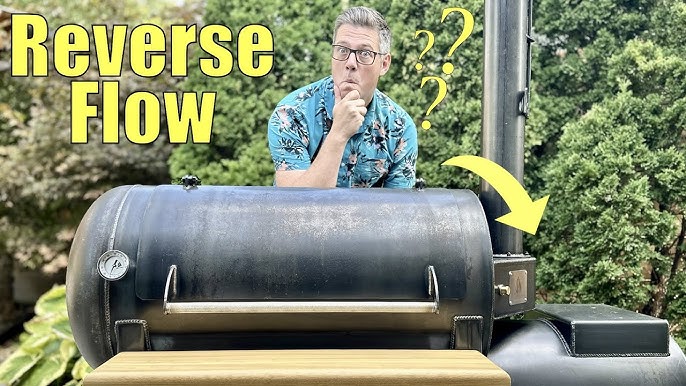
Reverse Flow Smokers have a unique design that sets them apart from traditional offset smokers. These smokers feature a baffle plate that extends from the firebox into the cooking chamber. This plate directs the heat and smoke underneath it and then back towards the food before it exits through the chimney. The reverse flow design helps to distribute heat and smoke more evenly, resulting in consistent temperatures throughout the cooking chamber. This design also helps to prevent hot spots and allows for more control over the cooking process. Overall, the reverse flow smoker design enhances heat distribution and promotes better flavor infusion in the food.
How Reverse Flow Smokers Work
Reverse flow smokers work by utilizing a baffle plate that extends from the firebox into the cooking chamber. This baffle plate helps to create a reverse flow of heat and smoke inside the smoker. The heat and smoke travel underneath the plate and then circulate back towards the food before exiting through the chimney. This design promotes even heat distribution and helps to eliminate hot spots in the cooking chamber. The reverse flow of smoke also ensures that the food is surrounded by a consistent flow of smoke, resulting in enhanced flavor infusion.
Pros And Cons Of Reverse Flow Smokers
Reverse Flow Smokers offer several advantages for BBQ enthusiasts. The even heat distribution provided by the baffle plate ensures consistent cooking temperatures across the entire cooking chamber, minimizing the risk of overcooking or undercooking. The reverse flow of smoke enhances flavor infusion, resulting in deliciously smoked meats. Additionally, these smokers require minimal intervention from the cook, allowing them to focus on other tasks during the smoking process. However, reverse flow smokers tend to be more expensive to build or purchase compared to traditional offset smokers.
Offset Smoker Design
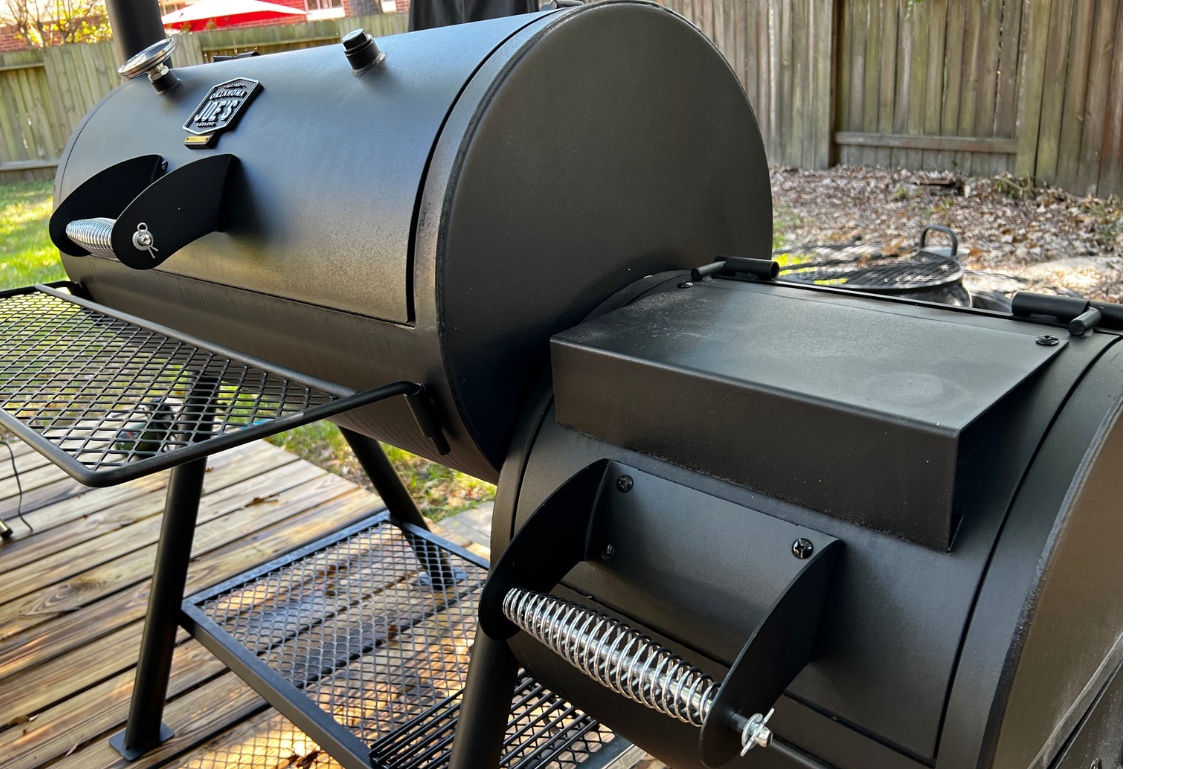
Offset smokers, also known as traditional offset smokers or stick burners, are designed with a separate firebox adjacent to the cooking chamber. The firebox is used to generate heat and smoke, which then travels into the main cooking chamber through a small opening. This design allows for indirect heat cooking, as the heat and smoke naturally flow from the firebox to the opposite end of the cooking chamber. Offset smokers typically have a chimney or vent on the opposite end of the firebox for smoke and heat to escape. The cooking chamber is usually a cylindrical shape with multiple cooking grates for placing the food. The heat and smoke travel under and around the food, providing a delicious smoky flavor.
How Offset Smokers Work
Offset smokers work by utilizing a separate firebox attached to the cooking chamber. The firebox is responsible for generating heat and smoke, which then travels into the main cooking chamber through a small opening. This design allows for indirect heat cooking, as the heat and smoke naturally flow from the firebox to the opposite end of the cooking chamber. The heat and smoke circulate under and around the food, creating a delicious smoky flavor. Offset smokers typically have a chimney or vent on the opposite end of the firebox for smoke and heat to escape.
Pros And Cons Of Offset Smokers
Offset smokers have several advantages and disadvantages that should be considered before making a decision.
Pros:
1. Enhanced Flavor: Offset smokers provide a traditional smoky flavor to the food due to the indirect heat and natural smoke circulation.
2. Versatility: These smokers allow for both direct and indirect heat cooking, making them suitable for a variety of foods.
3. Larger Cooking Capacity: Offset smokers usually have a larger cooking chamber, allowing for more food to be cooked at once.
4. Temperature Control: They offer better temperature control compared to other smoker types, allowing for precise cooking.
Cons:
1. Learning Curve: Offset smokers require some skill and experience to operate effectively.
2. Higher Price: Offset smokers tend to be more expensive compared to other smoker designs.
3. Fuel Consumption: They can consume a significant amount of fuel, especially when cooking for longer periods.
4. Uneven Heat Distribution: Without proper modifications, offset smokers may have hot and cold spots, requiring frequent monitoring and adjustment.
Overall, offset smokers provide great flavor and versatility but require a learning curve and careful attention to temperature control.
Key Differences

The key differences between reverse flow smokers and offset smokers lie in how they distribute heat and circulate smoke. Reverse flow smokers utilize a baffle system that guides the smoke and heat evenly throughout the cooking chamber, resulting in more uniform temperature distribution and reduced hot spots. On the other hand, offset smokers rely on the placement of the firebox, which creates a temperature gradient from hotter near the firebox to cooler on the opposite end. This can lead to uneven heat distribution and a need for frequent monitoring and adjustment. Additionally, reverse flow smokers tend to provide a more intense smoky flavor due to the longer smoke path, while offset smokers offer a traditional smoky flavor.
Heat Distribution And Temperature Control
In terms of heat distribution and temperature control, reverse flow smokers have an advantage over offset smokers. Reverse flow smokers utilize a baffle system that guides the smoke and heat evenly throughout the cooking chamber. This results in more uniform temperature distribution and reduces the occurrence of hot spots. On the other hand, offset smokers rely on the placement of the firebox, which creates a temperature gradient from hotter near the firebox to cooler on the opposite end. As a result, offset smokers require more frequent monitoring and adjustment to maintain consistent cooking temperatures.
Smoke Circulation And Flavor Infusion
In terms of smoke circulation and flavor infusion, reverse flow smokers and offset smokers differ in their approach. Reverse flow smokers, with their baffle system, ensure that the smoke circulates evenly throughout the cooking chamber. This results in a more consistent and thorough smoke infusion, leading to enhanced flavors in the food. On the other hand, offset smokers rely on the natural airflow, which can lead to uneven smoke distribution and potentially uneven flavors. It’s important to consider this factor when deciding between the two smoker designs.
Which One To Choose?
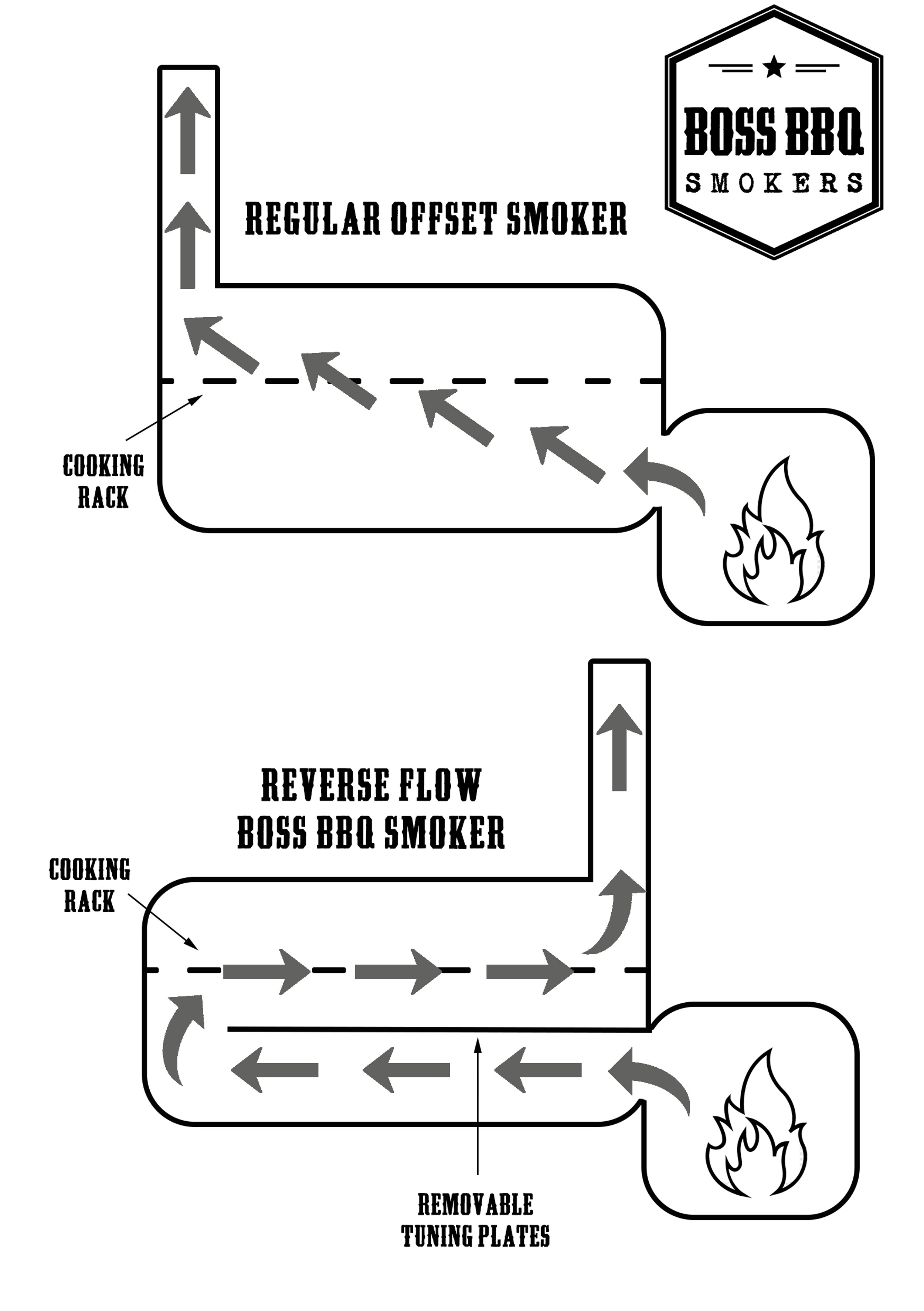
When it comes to choosing between a reverse flow smoker and an offset smoker, there are a few factors to consider.
If you prioritize even heat distribution and precise temperature control, a reverse flow smoker might be the better option for you. The baffle system ensures that heat circulates evenly throughout the cooking chamber, resulting in consistent temperature and better cooking outcomes.
On the other hand, if you prefer a more traditional and versatile approach, an offset smoker could be the right choice. While it may require some skill and technique to maintain temperature and smoke distribution, offset smokers allow for greater customization and experimentation.
Ultimately, the decision boils down to personal preference and experience level. Consider your desired cooking style and the level of control you want over the smoking process. Whether you choose a reverse flow smoker or an offset smoker, both can produce delicious smoked foods when used properly.
Factors To Consider
When choosing between a reverse flow smoker and an offset smoker, there are several factors to consider.
- Cooking Style: Consider your desired cooking style and the level of control you want over the smoking process. If you prefer precise temperature control and even heat distribution, a reverse flow smoker might be the better choice. If you enjoy a more traditional and versatile approach, an offset smoker may be the way to go.
- Skill Level: Assess your experience and skill level in smoking. Reverse flow smokers generally offer more consistent and easier temperature control, making them more suitable for beginners. Offset smokers require more skill and technique to maintain temperature and smoke distribution.
- Customization: Consider the level of customization and experimentation you want in your smoking process. Offset smokers allow for more flexibility in adjusting heat and smoke levels, offering a greater range of flavors and cooking techniques.
- Budget: Evaluate your budget and how much you are willing to invest in a smoker. Reverse flow smokers tend to be slightly more expensive due to their advanced design and features. Offset smokers, on the other hand, can be found at various price points, allowing for more budget-friendly options.
By considering these factors, you can make an informed decision about whether a reverse flow smoker or an offset smoker is the right choice for your smoking needs.
Best Uses For Reverse Flow And Offset Smokers
Reverse flow smokers are well-suited for those who prioritize even heat distribution and precise temperature control. They are ideal for smoking large cuts of meat, such as brisket or whole turkeys, as well as for long smoking sessions. Reverse flow smokers are popular among competition smokers and experienced pitmasters who want consistent results.
On the other hand, offset smokers are versatile and offer a more traditional smoking experience. They are great for smoking a variety of meats and can accommodate different cooking techniques, such as direct grilling or using the offset firebox for indirect smoking. Offset smokers are often favored by backyard BBQ enthusiasts who enjoy experimenting with different flavors and cooking styles.
Ultimately, the best use for either a reverse flow smoker or an offset smoker depends on the individual’s preferences, cooking style, and experience level.
Conclusion
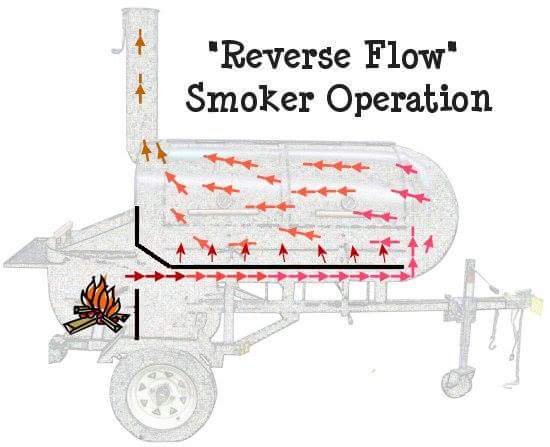
In conclusion, both reverse flow smokers and offset smokers have their own unique advantages and considerations. Reverse flow smokers are known for their even heat distribution and precise temperature control, making them ideal for professional pitmasters and competition smokers. On the other hand, offset smokers offer versatility and a more traditional smoking experience, allowing backyard BBQ enthusiasts to experiment with different cooking techniques. Ultimately, the choice between a reverse flow smoker and an offset smoker depends on personal preferences and cooking style. Whichever option is chosen, both smokers can deliver delicious smoked meats and an enjoyable BBQ experience.
Summary Of Differences
The key differences between reverse flow smokers and offset smokers lie in their heat distribution, temperature control, smoke circulation, and flavor infusion. Reverse flow smokers use a baffle system to achieve even heat distribution, resulting in more consistent temperatures throughout the cooking chamber. Offset smokers, on the other hand, rely on the firebox and chimney placement for heat control, which can lead to hot and cold spots. Smoke circulation in reverse flow smokers is more efficient, allowing for better flavor infusion. Ultimately, the choice between the two depends on individual preferences and cooking needs.
Making The Right Choice For Your Smoking Needs
When it comes to choosing between a reverse flow smoker and an offset smoker, it ultimately depends on your specific smoking needs. Consider factors such as the amount of cooking space required, the level of temperature control desired, and the flavor infusion desired in your meats.
If you prioritize consistent heat distribution, temperature control, and efficient smoke circulation, a reverse flow smoker may be the better choice for you. However, if you enjoy the traditional offset smoker experience and are comfortable with managing hot and cold spots, an offset smoker may be the right fit.
Ultimately, understanding your personal preferences and cooking requirements will help you make the right choice for your smoking needs.
FAQ About Reverse Flow Smoker Vs Offset: Comparing Smoker Designs
Q: What is the main difference between a reverse flow smoker and an offset smoker?
A: The main difference lies in the way smoke travels inside the cooking chamber. In a reverse flow smoker, the smoke circulates beneath a baffle before flowing back over the meat, resulting in a more even distribution of heat and smoke. Whereas, in an offset smoker, the smoke enters directly into the cooking chamber from a side firebox.
Q: Which smoker design offers better temperature control?
A: Reverse flow smokers typically provide better temperature control compared to offset smokers. The reverse flow design helps maintain a more consistent temperature throughout the cooking chamber, reducing hot spots and ensuring even cooking.
Q: Are reverse flow smokers more efficient than offset smokers?
A: Yes, reverse flow smokers are generally more efficient in terms of fuel consumption. The reverse flow design helps maximize the heat and smoke retention inside the chamber, allowing for more consistent cooking temperatures while using less fuel.
Q: Which smoker design is easier to clean and maintain?
A: Cleaning and maintaining a reverse flow smoker can be slightly more challenging due to the additional baffle and intricate smoke circulation system. On the other hand, offset smokers are relatively simpler in design, making them easier to clean and maintain.
Q: Do reverse flow smokers and offset smokers produce different flavors in the cooked meat?
A: While both types of smokers can impart delicious flavors to the meat, some pitmasters believe that reverse flow smokers tend to create a slightly milder smoke flavor compared to offset smokers. Ultimately, the choice of smoker design can influence the flavor profile of the cooked meat.
Q: In terms of size and portability, are reverse flow smokers and offset smokers similar?
A: Reverse flow smokers are often designed to be larger and heavier than offset smokers due to the extra components required for the reverse flow system. Offset smokers, on the other hand, are generally more compact and easier to transport for outdoor cooking events or competitions.
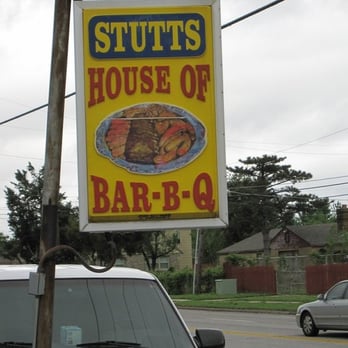
Stutts House of Barbecue is a haven for BBQ enthusiasts, offering a delectable array of smoked delicacies, including ribs, beef, bologna, and chicken, accompanied by all the trimmings you could ever dream of. Our passion for perfecting the art of smoking meats shines through in every savoury bite. At Stutts House of Barbecue, we take pride in our custom smoking techniques, ensuring that each piece of meat is infused with the perfect blend of smoky flavours. But it doesn’t stop there – our homemade desserts are the cherry on top of a delicious meal, adding a sweet finish to your BBQ experience.